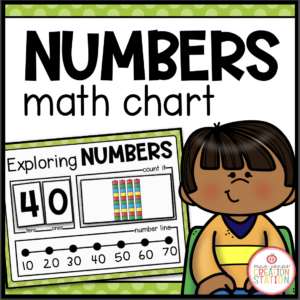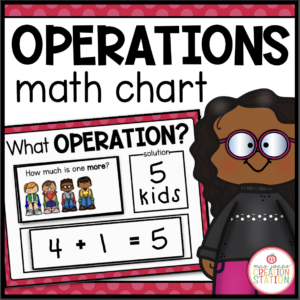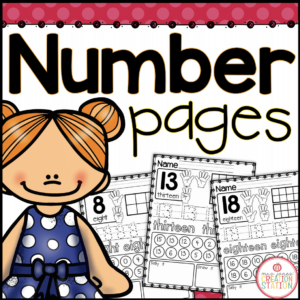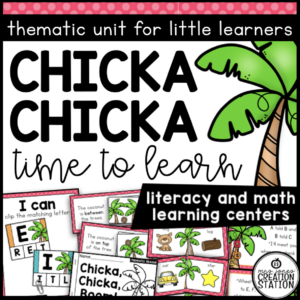Menu
$14.40
In this unit, this pack includes everything you need for an entire unit. This pack includes whole group, small groups and independent resources. These resources are used for introducing, teaching, reviewing and assessing addition and subtraction. In this unit, lesson plans with mini-lessons, center activities, and an interactive page are available for each week of instruction.
Buy the Math Pack for Little Learners and save!!!
____________________________________________________________________
THIS RESOURCE INCLUDES
Lesson Plans:
First, follow these lesson plans or use the ideas to supplement your curriculum. There are 5 weeks or 25 lesson plan ideas.
Addition and Subtraction Posters
In addition, use these posters as specified throughout the unit to help learners visualize the concepts taught. Posters include addition and subtraction definition, strategies and ways to add and subtract and addition and subtraction vocabulary.
Vocabulary Cards:
Also, post these cards on the math wall during the unit to refer to as new words are introduced.
Adding Doubles Book
First, have learners complete this book in a math center or as seat work.
Interactive Notebook:
With this lesson, have learners complete the addition and subtraction interaction notebook pages as a math rotation. Skills are reviewed throughout the unit in groups or partners.
Addition to 10
In week one, focus on addition to ten through storytelling, read alouds, charts, manipulatives and more in a group, partners and independent learning settings.
Addition to 12
In week two, continue using addition to twelve. Learners will become more familiar with the concept through the use of different addition strategies. Addition equations or number sentences are reviewed.
Subtraction from 10
In week three, focus on taking away through storytelling, read alouds, charts, manipulatives and more in a group, partners, and independent learning setting.
Subtraction from 10
In addition, week four continues using subtraction from twelve. Learners will become more familiar with the concept through the use of different subtraction strategies. Subtraction equations or number sentences will be reviewed.
Addition and Subtraction
Last of all, week five helps learners to understand which operation should be used. Through storytelling, word problems, class activities, your students understand addition and subtraction vocabulary and practice addition and subtraction problems.
Addition Clip Cards
In this center, have learners use the pictures on the clip cards to clip the correct total of objects.
Monster Sets
With this activity, have learners match the monster pictures to the correct addition equation.
Cookie Addition Mats
In this unit, have learners choose two cookie pictures and place them on the mat. Learners may then use a dry erase markers to solve the addition equation.
Gumball Ten Frame
In this center, have learners roll the dice to create an addition problem. Learners may use the mat and gumball manipulatives or pompoms to solve the equation.
Duck Away Equations
With this activity, have learners sort the duck equations on the mats according to the solution or difference each equation. Three ducks belong to each solution mat.
Subtraction Clip Cards
Next, have learners clip the correct equation for each of the pictures on the clip cards.
Gumball Subtraction Mats
In this center, have learners choose a number from a bag or bin and write the number on their subtraction mat. Learners subtract that number from twelve and use the mat or manipulatives to solve the equation.
S’mores Subtraction
In this activity, have learners match the correct difference to each of the equations.
Add or Subtract Fries
In addition, have learners find the cards around the room. Learners may write and solve the equations as they find the cards.
Baseball Operation Sort
Last of all, have learners sort the baseballs by their operation (addition or subtraction). Learners may then solve each equation on the printable
SaveSave
How can I see what is new in the MJCS store?
Be the first to know about new discounts, freebies, and new products. You can also subscribe to our newsletter to receive access to resources only available to MJCS subscribers, as well as, special offers and ideas!
How can I get credit for my TpT purchases?
Go to your account button at the top of the page. Under the “Buy” section, click “My Purchases “. Beside each purchase you’ll see a Provide Feedback button. Simply click the button and you will be taken to a page where you can give a quick rating and leave a comment for the product. Each time you give feedback, TpT gives you feedback credits that you use to lower the cost of your future purchases. Please leave detailed feedback for each resource, so we are able to create better resources for teachers and students.
How can I find a certain activity in a large PDF file?
If the resource you purchase has a variety of activities compiled into one PDF find the table of contents and click on the activity title. This should take you to that specific activity in the resource.
What can I do if I have a question about a resource?
If you have any questions regarded a resource before purchasing please email me at mrsjonescreationstation[at]gmail.com. Once you have purchased the resource you may use the “Product Q and A” tab on the product page to ask a question, as well.
How do I know if a resource has been updated?
Go to your account button at the top of the page. Under the “Buy” section, click “My Purchases “. Choose to “sort by: recently updated” to see what resources have been updated since you downloaded them last. You can download any updates from there. If a file has been updated, you will see a notification under the resource that says “Newly Updated – Download for Free!”
This item is a paid product created by Mrs. Jones’ Creation Station, Inc. Copying any part of this product, redistributing, selling or placing it on the internet in any form is strictly forbidden and is a violation of the Digital Millennium Copyright Act (DMCA). Thank you for respecting our work!
YES, YOU CAN…
NO, YOU CAN’T…
Click here for a detailed post with step-by-step directions.
You will need to download fonts specified in the resource and install it on your computer before downloading the editable file.
Install the most recent version of Adobe Reader onto your computer. If you have any problems editing, viewing or printing a file make sure your Adobe Reader is updated.
Now you can download the file to your computer. Once the file has downloaded open in Adobe Reader. You should be able to view the editable fields and the text should match the product description. If you have any problems editing the file, make sure you have followed the directions above and then contact me at mrsjonescreationstation[at]gmail.com




